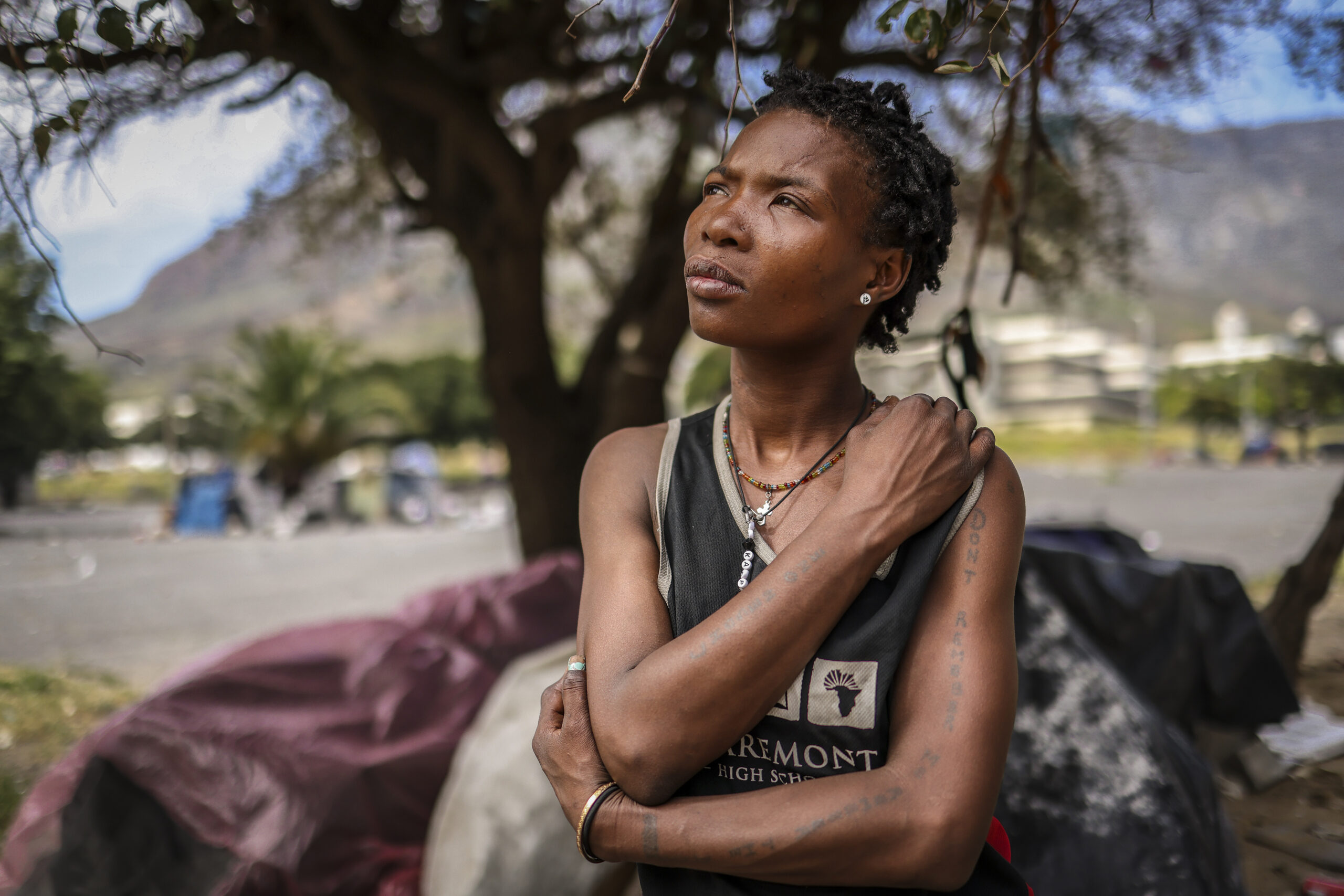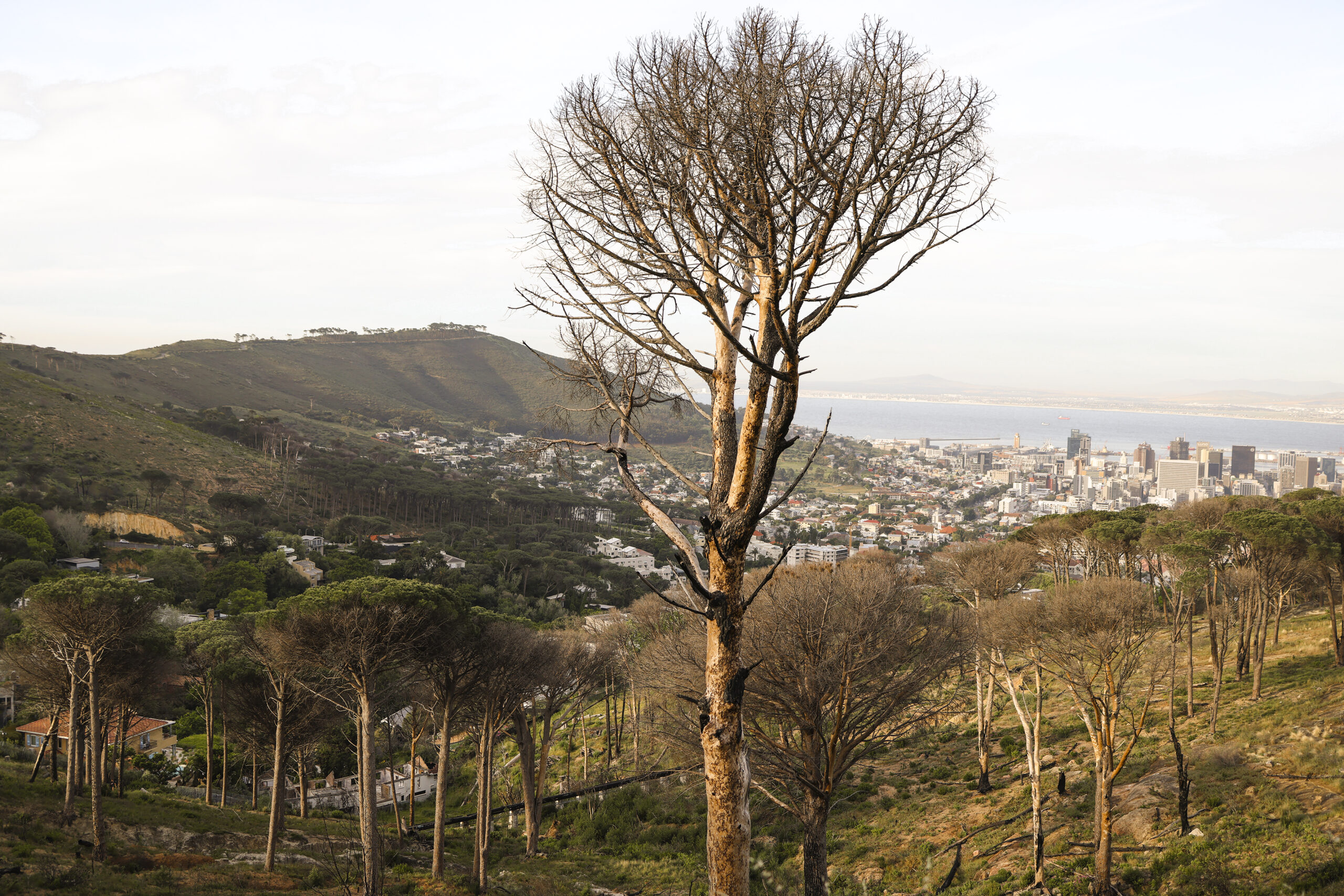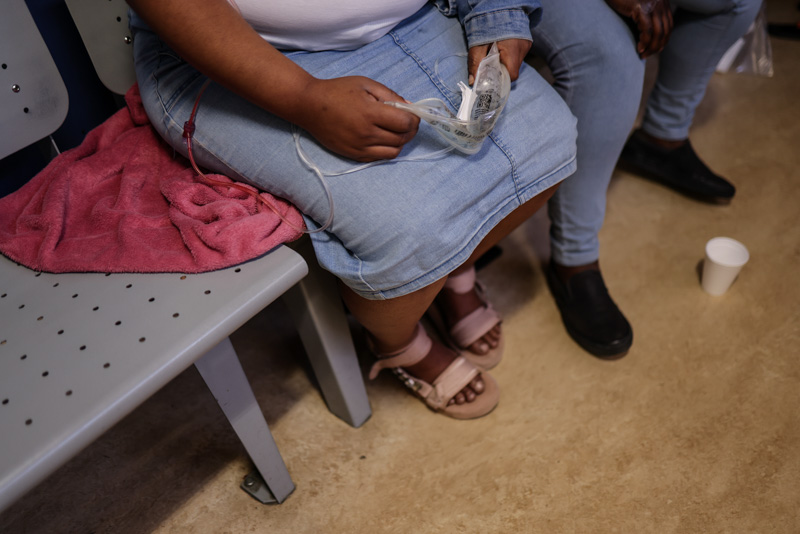Photo-Art Exhibition
by Gulshan Khan & Charlotte Scheerens
by Gulshan Khan & Charlotte Scheerens
Photo-Art Exhibition
by Gulshan Khan & Charlotte Scheerens
About the artist
Gulshan Khan is a South African photojournalist and visual artist. Her work traverses the multiple layers of identity, humanity, memory, transition, belonging, justice, and the dignity of people. She is inspired by the concept of healing through sincere and conscious storytelling. She has published in The National Geographic, The New York Times, The Washington Post, and The Guardian among others, and regularly works with NGO’s.
About the researcher
Charlotte Scheerens is a Belgian health sociologist and coordinator of the CliMigHealth network. Her research interests are health equity and environmental health epidemiology, where she tries to understand the compound effects from environmental stressors such as temperature extremes and air pollutants on health (particularly pulmonary and mental health) in at-risk (migrant) populations. Previously, she also co-coordinated the NGO Climate Express, that tried to push for more ambitious climate policies in Belgium.
Strength and Resilience in the Western Cape
Humans adapt. Humans move. Humans connect. Environments change, landscapes can be challenging, and infrastructure is expected to support it all.
The relationship between humans, environment and infrastructure is one that will be tested as climate change worsens. This relationship will be tested in every town, city and region on the planet affecting those who are on the periphery and the precariat, our vulnerable, the most.
There is an urgency of both, a local and global centered understanding of history, context, position and culture as a basis for dialogue and social change.
This is a story about strength and resilience. The Western Cape is a beautiful place and home to incredible communities and culture; who despite their challenges are finding ways to survive. It is a mirror for us to reflect on our collective humanity and praxis.
Idea conceptualisation, production and organisation by Charlotte Scheerens. Photos were taken by Gulshan Khan during a one-week field trip with Charlotte Scheerens in the Cape Town area in October 2021. Editing, curation, and descriptions by Gulshan Khan, Charlotte Scheerens, Bob Mash and Rashmi Venkatraman. Scenography: ssa/xx Kris & Frans Coremans. Fine Art Prints by ORMS and Photoshop Ghent. Funding by CliMigHealth, the Africa Platform of Ghent University Association, and Bijzonder OnderzoeksFonds (BOF). In-kind contributions: Stellenbosch University.
Inquiries: if you are interested in hosting this exhibition or want to purchase one or more of the photos, please contact: charlotte.scheerens@ugent.be.
Salt to the Earth
The undeniable connectedness between people and nature. Just as the mycelium connects everything, so too are communities and the land we inhabit is intrinsically interconnected. It is our created structures that force us to be distanced from our natural way of being in the world, but our resilience sometimes finds a way, through support for each other. Mother and daughter, Jennifer and Tammy* were violently evicted from their home in Hanover park during lockdown and have since been living on the streets trying to find work and shelter every night. Both say how they could not have survived without each other and the love and protection that this familial bond gives them. We have to pay to be alive on this planet, to live on the land, with a roof over our heads. Amina and Junaid* are married. They are pictured here just after swapping their old needles for new ones at the Step Up Project and Methadone Program for harm reduction for people who inject drugs. Living on the periphery means that many people become reliant on substances to survive the hardships of a life that our pre-dominant systems have failed.
* Names have been changed.
Divine Intervention
The burnt flowers, damaged during the Lion’s Head fires of 2018, blossom again, a testament to the resilience of the local ecosystem. The Lion’s Head fires of 2018 in Cape Town were a tragic example of how climate change can contribute to devastating wildfires. The fires also threatened the safety of nearby communities and disrupted the lives of migrants living nearby, but through the power of human resilience, they continue to persevere. Isaac* is pictured here as resilient as the nature that surrounds him. A former gang member, he wears his continuous journey of rehabilitation and healing proudly as the crown of a new life. The Step Up project and Methadone Program have therefore opened a new drop-in center in central Cape Town, South Africa. The project aims to assist people with harm reduction by providing a package of wellness services that includes sterile injecting equipment, opioid substitution therapy, HIV testing and screening, and psychosocial services. Despite the hardships, people enrolled in the needle program have shown remarkable strength and resilience, emerging stronger from the challenges they faced.
* Names have been changed.
The Walk of Life
Life is not a straight road; it is a journey full of twists and turns, ups and downs. Maria* lives in a tent in a parking lot in District Six in Cape Town. Living without a home since the age of 15, her life has been far from easy. Despite her struggles, she has refused to give up. As a person living with HIV, she receives treatment and counseling at the District Six Clinic, which has helped her in many ways. Through her experiences and being unafraid to disclose her HIV status, she has become an advocate for being aware of one’s own HIV status in her community, a true inspiration to us all. This series of photographs serves as a reminder that even in the most difficult paths, there is always hope and resilience.
* Names have been changed.
Bloodline
The Red crustose lichens on Table Mountain serve as a compelling example of the mutually beneficial relationships between organisms, with both the fungus and algae gaining from each other’s contributions. This synergistic relationship allows the lichens to exhibit tolerance to a wide range of environmental conditions. People rely in a like manner on resources and infrastructure to meet their basic needs and prosper. Infrastructure accessibility is particularly vital for certain individuals’ survival, with the Service Dining Rooms providing food and shelter to those in need. Christopher* who has been unhoused for 47 years remembers when a meal here would cost just R1.00. “I have seen people who work here come and go, some have even died, and I am still coming here for the food”. The wheelchair, symbolic in this instance, visualizes the concept of support, mobility, and access that can ease life. Once these fundamental needs are met, people collaborate to optimize the infrastructure and establish a sustainable community. Through working together, people and infrastructure can coalesce into a cohesive organism, akin to the Red crustose lichens on Table Mountain.
* Names have been changed.
Breathing – Food, Water and Air
People, many of whom live in shelters and on the slopes of Table Mountain, wait outside the Service Dining Rooms in District 6 for food. The Service Dining Rooms in Cape Town is a non-profit organization that provides free meals and support to people in need, particularly those who are homeless or struggling with poverty. The organization was established in the 1930s and has since become an integral part of the Cape Town community, providing daily hot meals, shelter, and other essential services to those in need. In addition to providing meals, the organization also runs programs to support job training, education, and community outreach, all with the aim of helping people break the cycle of poverty and build a better future for themselves and their families. The Service Dining Rooms are a shining example of the power of community-driven initiatives to make a positive impact in the lives of those who need it most. Similar to the Service Dining Rooms, the Protea Neriifolia is an example of resilience and endurance in the face of difficult circumstances as this flower can survive in dry and harsh conditions, adapting to its environment to thrive.
Watch for the Horizon
The resilient spirit of both people and nature, standing strong despite challenging circumstances. A burnt tree from the Lion’s Head Fire is standing tall on the Table Mountain slope. A District Six primary care facility manager’s face is lit up by the sun through one of the large windows of the facility, allowing for natural sunlight to enter the building. Suraya*, a beacon of hope, standing tall amidst the makeshift tents that have become her home. Her story is a powerful reminder of the strength and determination of those who have been without a roof over their heads for far too long. Yet, through the struggles of daily life, she has found a way to become a leader for her community, protecting them in whatever way she can, fielding their shelter, organizing water from the nearby garages, sometimes even from the manholes, trying to evade police evictions which often turn violent. Somehow there is hope even in the direst situations.
* Names have been changed.
Make Space
The impact of climate change on the health of the community, including the effects of extreme weather events such as heatwaves, droughts, and floods, which have led to an increase in vector- and water-borne diseases and respiratory illnesses among vulnerable populations. This is particularly true for those who have migrated to the area due to socio-economic factors. Against this backdrop of environmental adversity, Khayelitsha’s hospital is working to support affected communities, providing critical health services to those in need. Medical waste is ground up and fills the back of a truck, in the hospital. The scarcity of resources, including hospital beds, is a stark reality for those who have migrated to the area. Despite these challenges, the healthcare facilities in Khayelitsha are working tirelessly to support the health and well-being of the community.
* Names have been changed.
Bloom Where You Are Planted
This series of photographs highlights the significance of utilising available resources creatively and resourcefully to persist and flourish amid adversity, similar to the vegetation that thrives high up on Table Mountain, despite being deemed impossible. The farmers at Vegklop Polyculture Farm utilise the principles of Waterman’s farming, not as a means of recreating or reliving the past, but rather as a source of insight into their ancestors’ struggles, enabling them to address the contemporary challenges they face within their environment and community. An intern farmer is depicted adding soil to the compost heap, a traditional practice aimed at nurturing the soil and ensuring successful harvests. Despite limited resources, such as a shortage of beds, the staff at Khayelitsha Hospital strive to provide a basic level of care by supplying wheelchairs for patients to rest in while awaiting treatment.
Watching and Listening
Access to basic needs such as food, water, shelter, and healthcare is a constant struggle for many people in Cape Town, and waiting for these services has become a significant part of their daily lives. All struggles are connected to sustaining life. Suhayl* stands for a portrait beside the make-shift tent which provides him with shelter, in an open-air parking lot in which he and other community members live, close to District Six Clinic in District Six, Cape Town. He came to the city of Cape Town in 2002 from Tanzania to look for work and has been living in this parking lot for four years. During the drought periods in Cape Town in 2015-2016, he struggled to get access to water and had to drink from the drains. In hospitals such as Khayelitsha Hospital, patients can spend days waiting for treatment in casualty due to a shortage of beds. Despite these challenges, organizations like the Service Dining Rooms serve as a beacon of hope, trying to improve access to basic needs for the most vulnerable in the community.
* Names have been changed.
Kindled from a Blessed Tree
The founder of Vegklop Polyculture Farm, Nazeer Sonday, walks through the crop on the farm in Philippi, Cape Town. The farm has become a model for sustainable agriculture practices, guided by agroecological principles, the teachings of the Watermans of Camissa, and the rich tradition of the Cape Khoi communities to cultivate a diverse range of crops and livestock. They seek to be good stewards of the land and recognize the importance of their relationship with the land and soil. The farm serves as a learning and training hub for sustainable and regenerative agriculture to promote environmental and human health. In contrast, the presence of plastic in the swamp where horses drink water may harm both the environment and the health of the animals that rely on it. Similarly, patients waiting for further treatment in casualty, with some already having had drip lines inserted, in Khayelitsha Hospital in Cape Town show the need for more sustainable and equitable practices to promote the well-being of both people and the planet. By providing fresh and healthy food to the community, the Vegklop Polyculture Farm tries to improve the health and well-being of local residents, reducing the burden on the healthcare system.





































